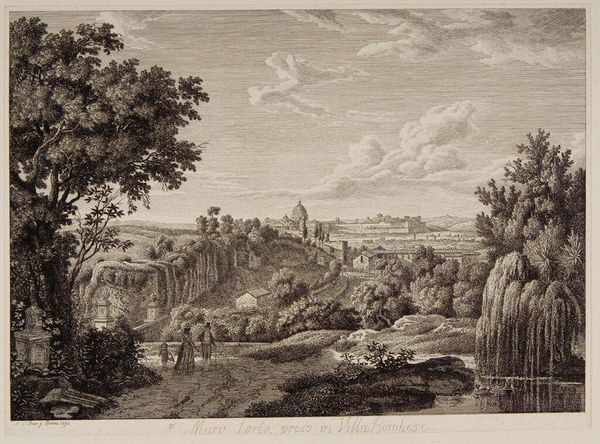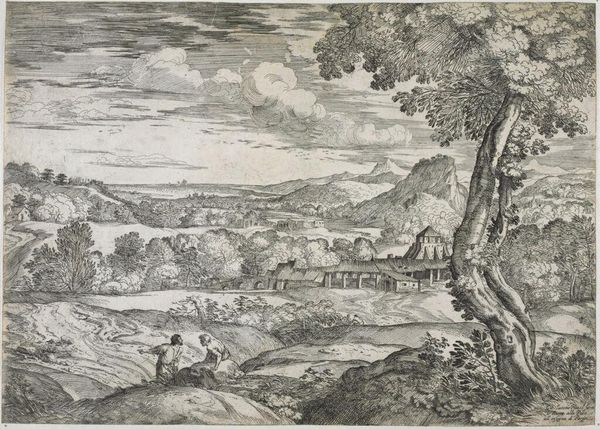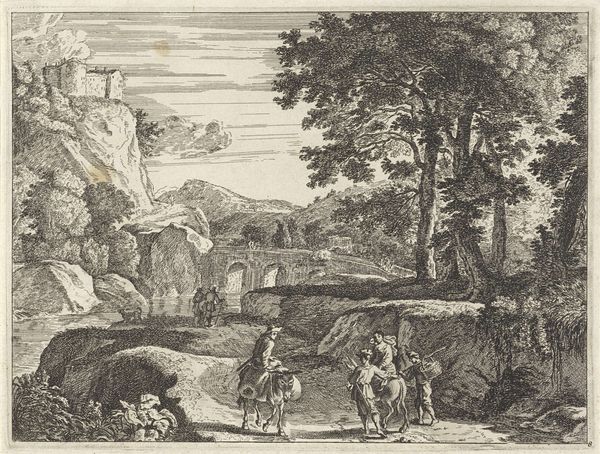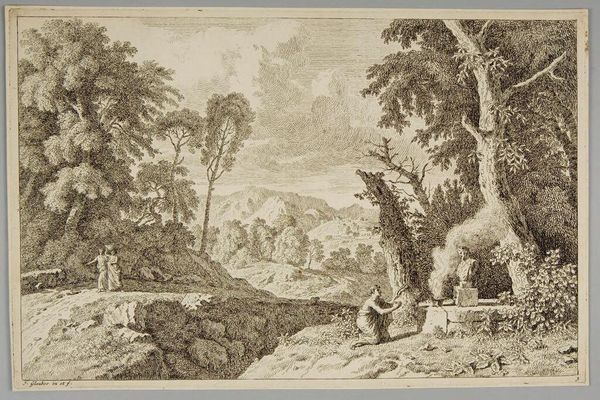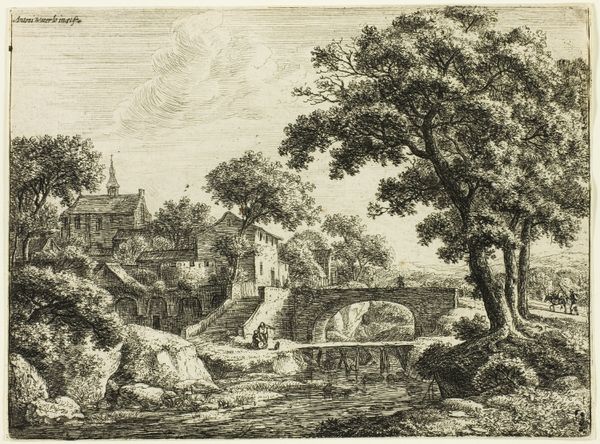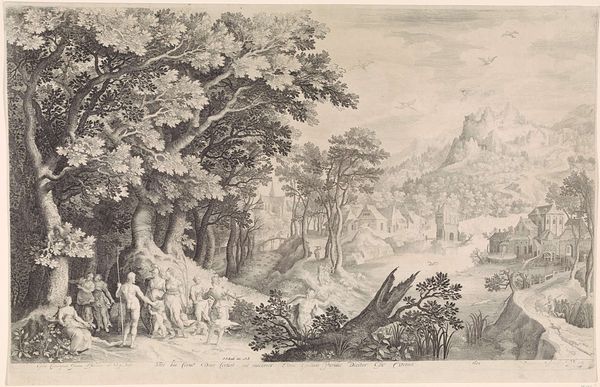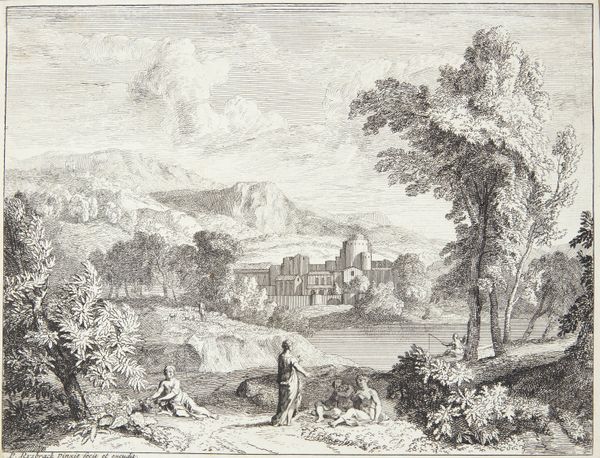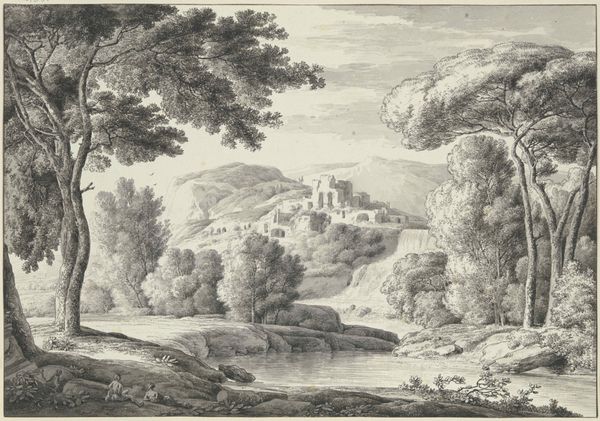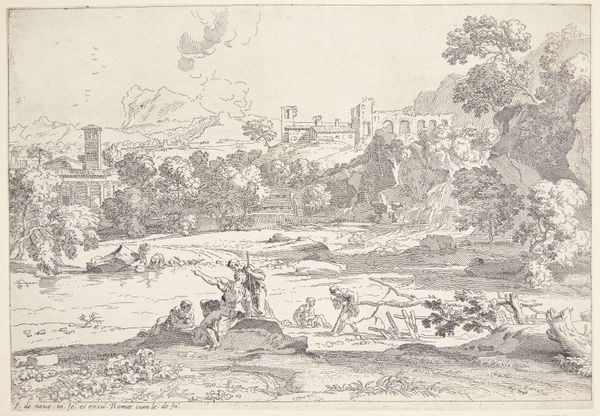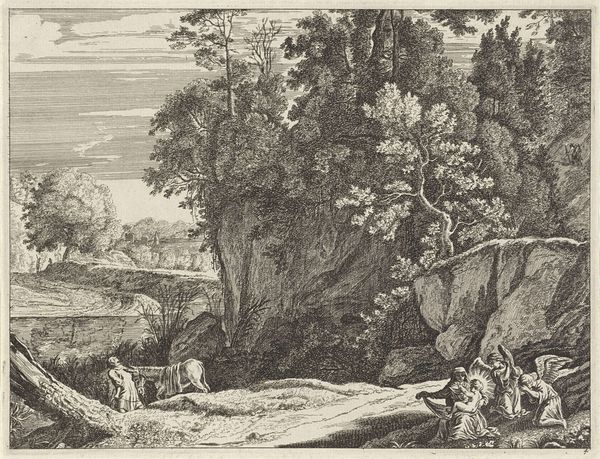
Landscape with the Funeral of Phocion 1648
0:00
0:00
nicolaspoussin
National Museum Cardiff, Cardiff, UK
painting, oil-paint, architecture
#
baroque
#
painting
#
oil-paint
#
landscape
#
classical-realism
#
figuration
#
oil painting
#
cityscape
#
history-painting
#
academic-art
#
architecture
Dimensions: 114 x 175 cm
Copyright: Public domain
Curator: Nicolas Poussin’s "Landscape with the Funeral of Phocion," painted in 1648, presents a classically idealized vision of a historical event, rendered in oil on canvas. The artwork can be found at the National Museum Cardiff. Editor: The painting immediately strikes me as serene, almost impossibly so, given the subject. There's a powerful contrast between the calm, almost idyllic landscape, and the somber event taking place within it: the funeral procession itself. It almost feels staged. Curator: Poussin was deeply invested in depicting narratives that reflected stoic virtue and civic responsibility. Phocion, a prominent Athenian general unjustly condemned to death, was a perfect subject. Poussin created two versions of the Phocion story to encourage these themes of moral rectitude. What specific symbols strike you? Editor: Well, death and injustice, for starters. The figures carrying the body are cloaked, but draped dramatically, recalling ancient statuary; however, their bowed heads seem weighed down not by sorrow, but perhaps duty. There’s almost a clinical detachment to the funeral, and the distant cityscape amplifies a sense of collective apathy. But the serene countryside continues, indifferent to one person's suffering. This lack of grand emotionality can seem disconcerting, but the message must be clear. Curator: Exactly. Poussin aimed to elevate history painting, imbuing it with philosophical weight. He very deliberately frames Phocion’s death as an event within the broader social order, reflecting stoic acceptance. Even the composition serves this purpose, doesn't it? Editor: Absolutely, and that classical architecture in the distance becomes part of this timeless setting, so to speak. Its placement and that perfectly blue sky provide a calming sense of reason prevailing. This speaks not of overwhelming emotional responses to injustice, but enduring systems above transient problems. The ordered rows in the buildings give way to the irregular curves in nature. What is your reading? Curator: My interpretation sees the painting highlighting a tension between public duty and individual fate within a classical framework. In painting Phocion’s funeral as a backdrop to this scene allows us to question our own civic responsibilities toward our leaders and one another. It really provokes a deeper reflection on the social costs of justice and injustice within social order, even centuries later. Editor: Poussin successfully utilized a specific moment to tell the long story of those who sacrifice and of those who observe these moments. I hope our listeners gained deeper insight into a story that still resonates within modern political discourse.
Comments
No comments
Be the first to comment and join the conversation on the ultimate creative platform.
